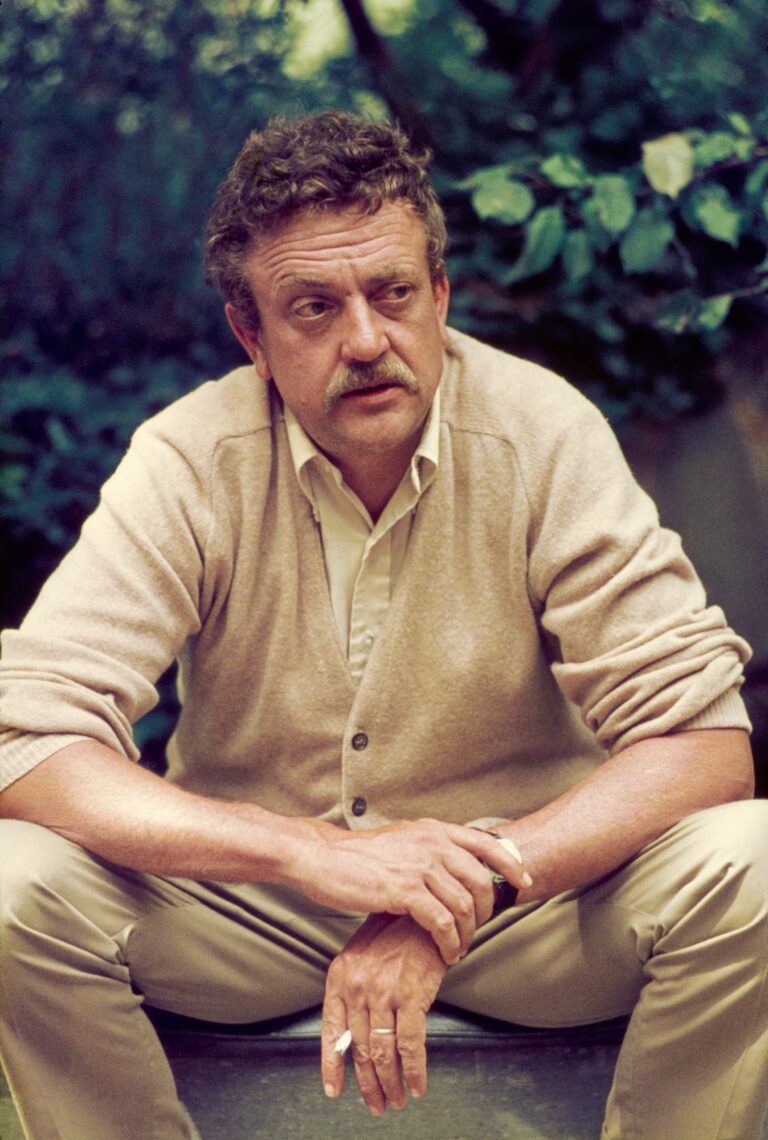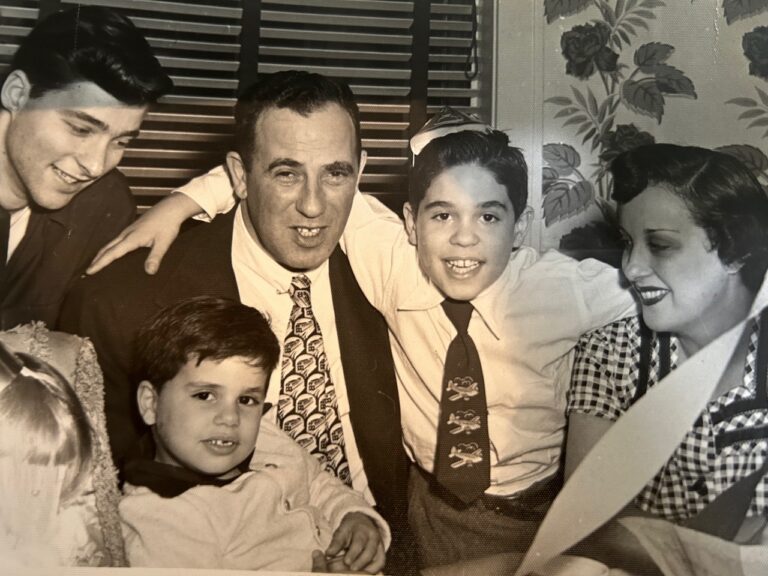The great composer had plenty to say about maniacal dictators
Evanston RoundTable, Oct. 13, 2022
Dmitri Shostakovich died in 1975, two years after being serenaded by Northwestern students at the school commencement ceremony in Evanston, where he received an honorary doctorate.
Vladimir Putin, the current president of Russia, was born 70 years ago in St. Petersburg (then Leningrad). He was too young to have met the celebrated composer. In 1975, the year Shostakovich died at age 68, Putin had just graduated from Leningrad State University and joined the KGB Foreign Intelligence Service.
How would the shy, nervous Shostakovich have reacted to today’s brutal dictator, who invades a peaceful neighbor and threatens the world with nuclear weapons? Impossible to say, of course, except for one thing: The same fear of speaking out in Putin’s Russia was even more pronounced in Shostakovich’s day.
In the 1930s the supreme leader was Joseph Stalin, the dreaded Koba, the Vozhd, the Man of Steel, who sent millions of innocent citizens to their deaths or to the gulags. Yet astonishingly, Shostakovich did speak the truth, producing a symphonic template of life under Stalin.
Was that courageous or suicidal?
The infamous opera
In 1934, the then-28-year-old composer premiered his hugely popular opera Lady Macbeth of Mtsensk. Based on a lurid 19th century story, according to NPR, “it combined vivid and exciting music with graphic violence and sexuality – and it was an instant hit.
“Over the next two years, it was performed almost 200 times in Leningrad and Moscow, and was produced on stages from London to New York to Argentina. Early in 1936, three different productions of the opera were being staged in Moscow alone.
“Then the bottom fell out. In January of 1936, a delegation of Soviet officials, including Stalin, attended the opera at the Bolshoi – and reportedly walked out before the final act even began.
Almost immediately, an article appeared in the government newspaper Pravda denouncing the opera. It was unsigned, but many think it originated with Stalin himself.”
These last four words were like a bull’s eye pinned on Shostakovich’s back that marked him as a possible risk to the state, even an enemy of the people.
Such things were all too common in Stalin’s Soviet Union.
According to the BBC, many of Shostakovich’s “closest friends and relatives were imprisoned or executed, including his patron Marshal Tukhachevsky; his brother-in-law, the distinguished physicist Vsevolod Frederiks; his great friend the musicologist Nikolai Zhilyayev; his mother-in-law, the astronomer Sofiya Mikhaylovna Varzar; his uncle Maxim Kostrykin; and his colleagues Boris Kornilov and Adrian Piotrovsky.
“In 1937, he himself was summoned for interrogation and only escaped due to a twist of fate: his interrogator was arrested before his own appointment came. His income dropped by 75% and he ran out of money. His wife was pregnant. He kept a small suitcase packed for his inevitable arrest. He began sleeping in the stairwell out of fear.”
Agonizing choice
Given these terrifying circumstances, Shostakovich faced an agonizing dilemma: Stop composing serious music or resort to writing only the phony celebrations of “Socialist Realism” that were suddenly de rigueur?
Both options were anathema to the composer. He said he could no more stop composing than he could stop breathing. “If they were to cut off my hands, I would take the pen into my mouth,” he told friends. Likewise, he was incapable of writing vulgar tributes to the noxious regime.
Instead, his response was the Fifth Symphony, which premiered in his native Leningrad on Nov. 21, 1937. The great Russian cellist Mstislav Rostropovich, a close friend of the composer’s, called Shostakovich’s symphonies “a secret history of Russia,” and the Fifth is as brilliant, courageous and revealing as any work of art ever produced. But what does it reveal?
The symphony opens with a slow, almost lugubrious elegy, marked by odd rising and falling intervals in the lower strings, as if the music is beset with fatigue and indecision. Where are we headed, it seems to ask.
After moving solos by bassoon, flute and clarinet, the listlessness suddenly gives way (at 9:07 in this outstanding live performance conducted by Leonard Bernstein) with a sudden burst from the piano that announces a new and increasingly raucous energy – part terror and part exhilaration – punctuated first by low horns, then upper strings.
A cymbal crash at 11:00 unleashes a new level of violence, a musical avalanche that grows faster, bigger and more terrifying – drums pulsing, horns blaring, havoc barely contained, with the somber opening theme reprised in thunderous, frightening blasts – until angry timpani and horns like arriving soldiers at 13:30 declare an end to the riotous demonstration and lead the way back to a quiet, almost dreamy ending, all the more disquieting after the previous cataclysm.
What was the reaction of Soviet censors to this amazing, paradoxical music? “If as the [Communist] Party said there must be no hint of tragedy in Soviet art, the first movement of the [Fifth] symphony presented a problem, since it posed a dark drama that constantly bordered on the tragic,” wrote British composer Norman Kay.
In contrast, the second movement is infectious, buoyant, almost upbeat. But how is today’s listener (or the 1937 attendee at the Leningrad premiere) to interpret this seemingly lighthearted romp?
Since his death in 1975, Shostakovich scholars have churned out hundreds of books and articles claiming to understand the man and decipher his music’s ambiguities and the questions they raise: Was his purported and then disputed memoir Testimony genuine or fake? Was the composer a closet dissident or loyal son of the Communist Party? Did he hide clues of possible dissidence in the music? Was he hugely courageous or a craven coward? (Probably fake, unknown, yes, maybe both.)
So perhaps the movement’s “joyousness” is a dodge, a feint, a lie – a strong possibility given the Irony, Satire, Parody and the Grotesque in the Music of Shostakovich as demonstrated in Esti Sheinberg’s book of the same name. Shostakovich scholar Ian MacDonald calls the movement “tasteless merriment.” Was the joy ride intended to be fun or phony? Such ambiguity kept the authorities guessing.
There is no irony or ambiguity in the slow and intensely expressive third movement that is the heart of the symphony. The development section, led by a striking duet between flute and harp, “has everything: memorable melody and a huge range of emotion,” wrote David Hurwitz in Shostakovich: Symphonies and Concertos. The movement’s searing lament seems to take in all the tragedy and suffering of living in the Soviet Union in the 1930s.
Audience members reportedly cried to hear their pain so hauntingly portrayed in this requiem “for the millions of innocent victims of the Stalinist regime,” according to Irina Nikolskaya. Some in the audience were afraid they’d be arrested as they left the concert hall. Like Picasso’s Guernica, this work testifies to man’s brutality and torment in a way almost nothing else has ever done.
The fourth movement is hugely controversial, “perhaps the most disturbing and ambivalent music of the twentieth century,” said author Solomon Volkov. It’s a fast-paced romp, with the requisite martial opening, a soothing middle section and a joyously bombastic ending – just the thing to happily mesmerize the Soviet music censors.
But in recent years conductors have slowed down the finale so that the work sounds almost painful, ending with 251 consecutive eighth-note A naturals (starting around 49:37 in the Bernstein performance), “like nails pounded into one’s brain,” said soprano Galina Vishnevskaya.
Uproarious applause
“The applause went on for an entire hour,” wrote the cellist Rostropovich. “People were in an uproar, and ran up and down through the streets of Leningrad till the small hours, embracing and congratulating each other for being there. They had understood the message …[of] the Fifth Symphony: the message of sorrow, suffering and isolation. …”
Vishnevskaya called the symphony “a huge complex of passion and suffering.”
“In the tragic pages of the Fifth Symphony,” wrote Russian musicologist Daniel Zhitomirsky, “the rhythms are unyielding and inexorably urgent. The melody is gloomy, time and again forcing its way as though through barbed wire; it has that tone of a suppressed soul, permeated with harsh bitterness, but a soul that has not yet been destroyed and which is still resisting.”
That was what the Leningraders were celebrating: the message that they were still able to resist, even if only in their own thoughts, and that their beloved native son Shostakovich could portray those feelings in a form of public testimony and somehow get them past the censors.
Soviet music scholar Richard Taruskin wrote that the Fifth Symphony was first performed “at the very height of … perhaps the bloodiest political terror the world has ever seen.” Shostakovich “managed to bear witness against the state on behalf of its citizenry. This was perhaps the most honorable civic use to which music has ever been put, a use in which the composer and his silenced audience could reclaim their individual subjectivities from an all-powerful authority. Music was the only art that could serve this purpose publicly. Never was its value more gloriously affirmed.”
Stalin vs. Putin
Yet surely, returning to Putin, one cannot compare “Vlad the Impaler” with Stalin. Stalin, after all, killed more people than Hitler, most of them his own citizens. Putin kills only his own enemies, plus thousands of innocent Ukrainians.
And yet there’s this argument for parity from contributor Anne Applebaum in the Sept. 30 issue of The Atlantic: “One core principle of this world order is that larger countries should not be able to grab parts of smaller countries, that mass slaughter of whole populations is unacceptable, that borders have international significance and cannot be changed through violence or on one dictator’s whim.”
She continues, in drawing her own parallel between Stalin and Putin: “If, once upon a time, the threat of the gulag was used to keep all Soviet citizens in a state of permanent fear, the threat of the war in Ukraine is now being used in exactly the same way against Putin’s subjects.”
“Since the war began,” says Applebaum, author of the 2004 Pulitzer Prize-winning Gulag: A History, “the crackdown at home has also accelerated, because the war provides the context in which dissent can be portrayed as treason, and because any criticism of the war is a crime. Newspapers, websites, social-media channels, and civic groups of all kinds have been shut down. More than 16,400 Russians have been detained in prison for protesting.”
“As a work of art … [the Fifth Symphony] speaks not merely for Russia in 1937,” wrote MacDonald in The New Shostakovich, “but for hundreds of millions of others in the twentieth century who have suffered under political oppression.”
Shostakovich’s Fifth Symphony – brave in the extreme in calling out the tragedy of life under Stalin – is not just about Stalin. It is about suffering under and enduring all dictatorships.




+ There are no comments
Add yours